Abstract
The variability of reflux symptoms in patients with hiatus hernia is well known, and a poor correlation between the symptoms of oesophagitis and appearances at oesophagoscopy has been noted.
A study has been made of the relationship between four variables. These are the acid reflux occurring in the oesophagus, the peristaltic clearance, the oesophagitis present and the symptoms from which the patients are suffering.
Symptoms were found only in patients with oesophageal pH levels below 4. However, such acid levels could occur in the absence of significant symptoms and there was a poor correlation between symptoms and various levels of pH below this.
Poor motor function in the oesophagus was associated with poor clearance of acid from it. Patients with poor clearance show a greater tendency to have oesophagitis, but, despite this correlation, in the group as a whole, there was no clear relationship between the results of the tests and the severity of symptoms.
Full text
PDF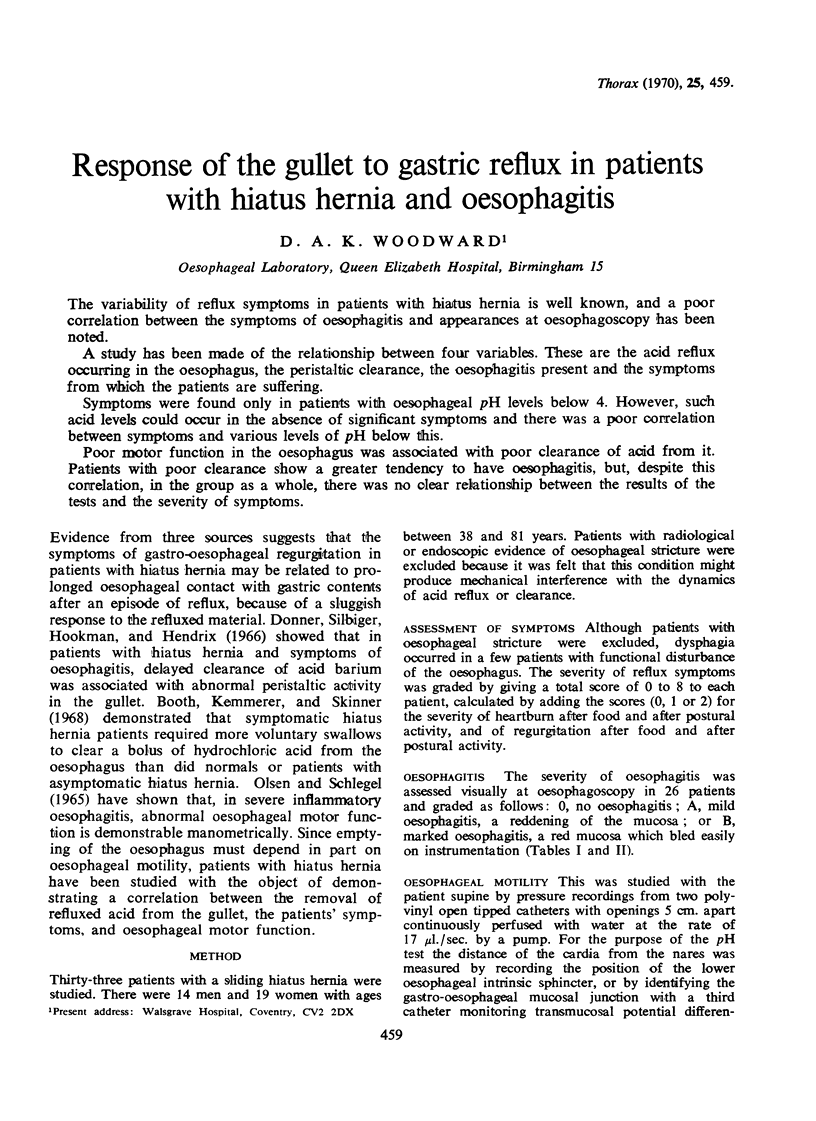
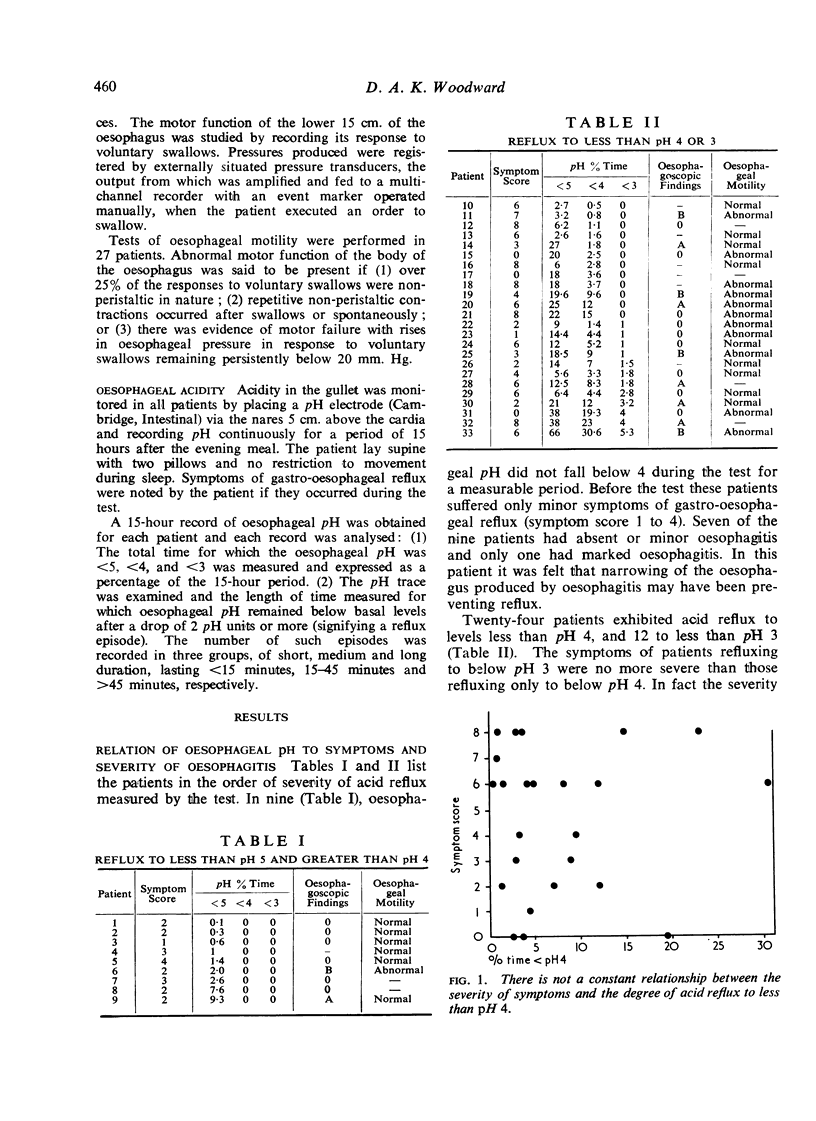
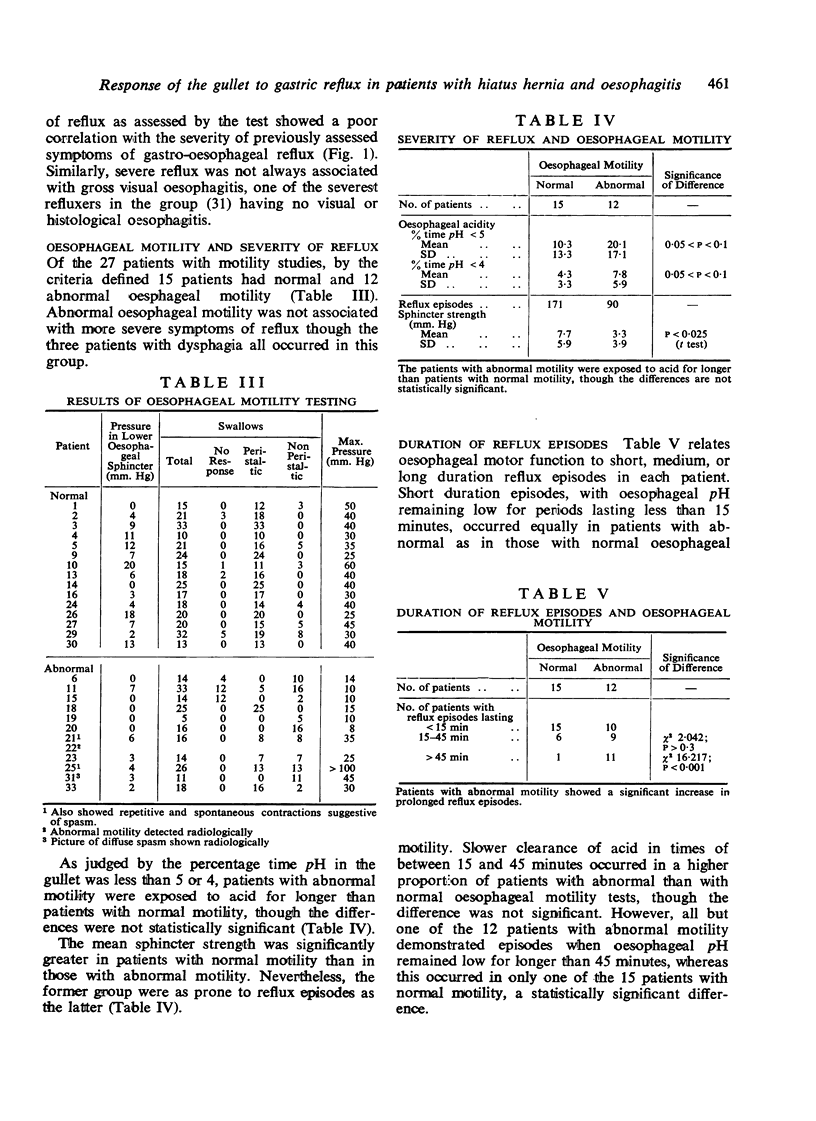
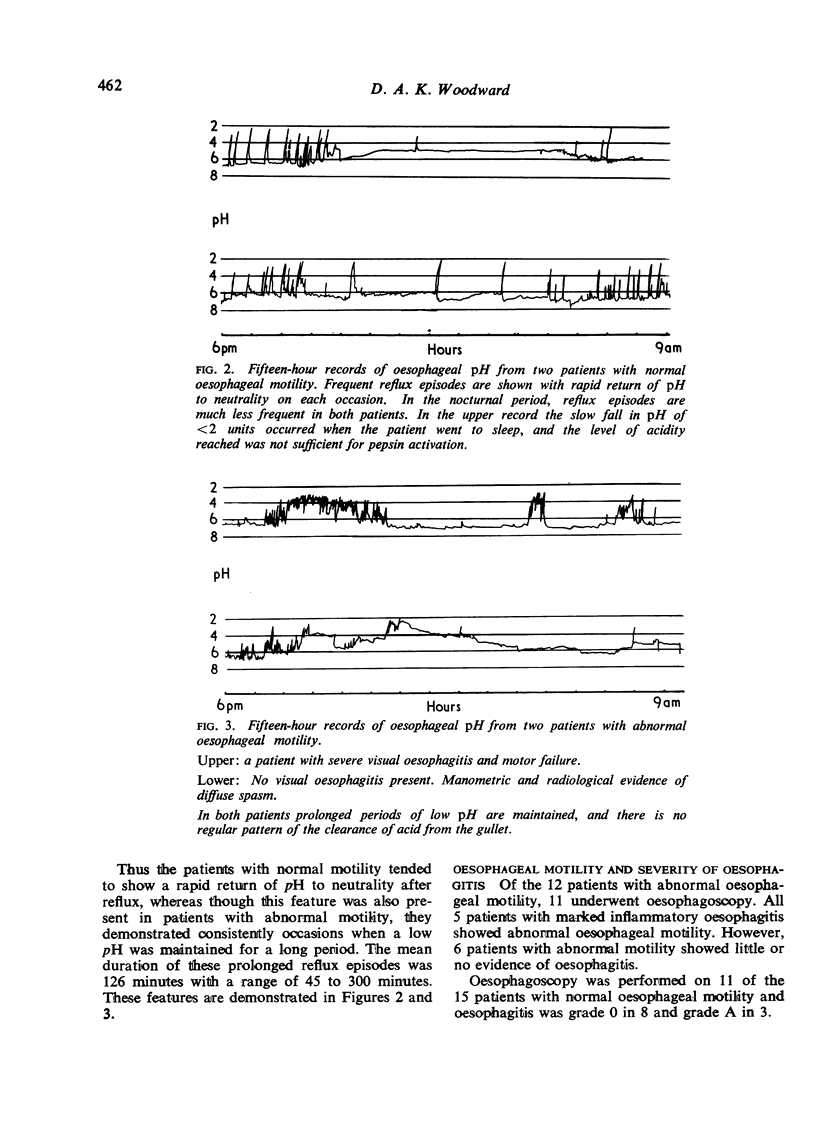
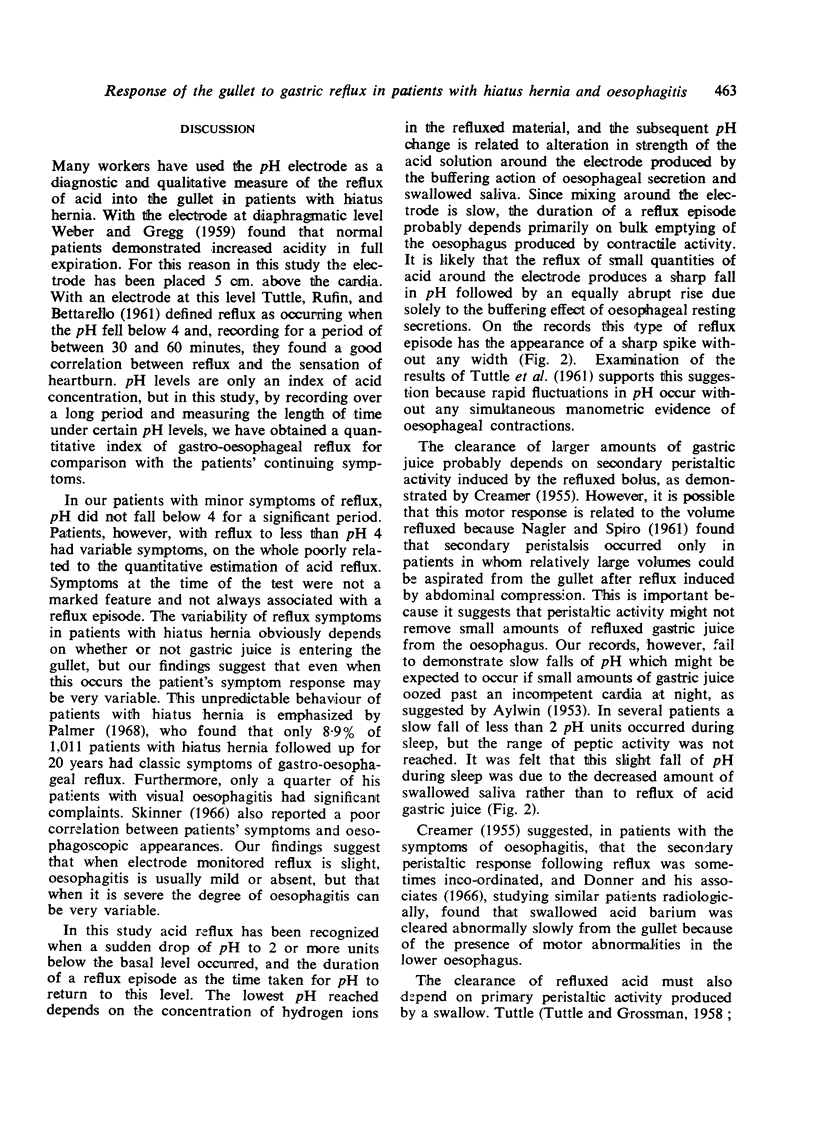
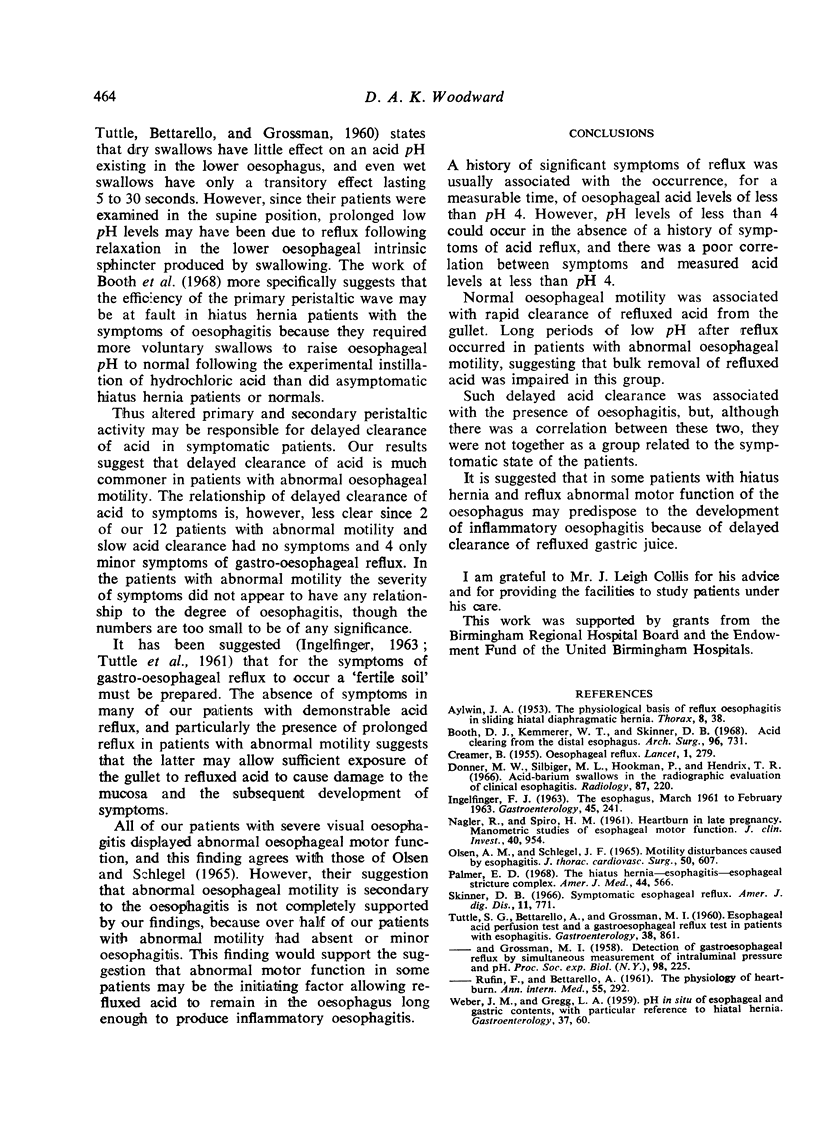
Selected References
These references are in PubMed. This may not be the complete list of references from this article.
- AYLWIN J. A. The physiological basis of reflux oesophagitis in sliding hiatal diaphragmatic hernia. Thorax. 1953 Mar;8(1):38–45. doi: 10.1136/thx.8.1.38. [DOI] [PMC free article] [PubMed] [Google Scholar]
- Booth D. J., Kemmerer W. T., Skinner D. B. Acid clearing from the distal esophagus. Arch Surg. 1968 May;96(5):731–734. doi: 10.1001/archsurg.1968.01330230039006. [DOI] [PubMed] [Google Scholar]
- CREAMER B. Oesophageal reflux. Lancet. 1955 Feb 5;268(6858):279–281. doi: 10.1016/s0140-6736(55)90108-2. [DOI] [PubMed] [Google Scholar]
- Donner M. W., Silbiger M. L., Hookman P., Hendrix T. R. Acid-barium swallows in the radiographic evaluation of clinical esophagitis. Radiology. 1966 Aug;87(2):220–225. doi: 10.1148/87.2.220. [DOI] [PubMed] [Google Scholar]
- INGELFINGER F. J. THE ESOPHAGUS, MARCH 1961 TO FEBRUARY 1963. Gastroenterology. 1963 Aug;45:241–264. [PubMed] [Google Scholar]
- NAGLER R., SPIRO H. M. Heartburn in late pregnancy. Manometric studies of esophageal motor function. J Clin Invest. 1961 Jun;40:954–970. doi: 10.1172/JCI104335. [DOI] [PMC free article] [PubMed] [Google Scholar]
- Olsen A. M., Schlegel J. F. Motility disturbances caused by esophagitis. J Thorac Cardiovasc Surg. 1965 Nov;50(5):607–612. [PubMed] [Google Scholar]
- Palmer E. D. The hiatus hernia-esophagitis-esophageal stricture complex. Twenty-year prospective study. Am J Med. 1968 Apr;44(4):566–579. doi: 10.1016/0002-9343(68)90057-0. [DOI] [PubMed] [Google Scholar]
- Skinner D. B. Symptomatic esophageal reflux. Am J Dig Dis. 1966 Oct;11(10):771–779. doi: 10.1007/BF02233837. [DOI] [PubMed] [Google Scholar]
- TUTTLE S. G., BETTARELLO A., GROSSMAN M. I. Esophageal acid perfusion test and a gastroesophageal reflux test in patients with esophagitis. Gastroenterology. 1960 Jun;38:861–872. [PubMed] [Google Scholar]
- TUTTLE S. G., GROSSMAN M. I. Detection of gastro-esophageal reflux by simultaneous measurement of intraluminal pressure and pH. Proc Soc Exp Biol Med. 1958 Jun;98(2):225–227. doi: 10.3181/00379727-98-23998. [DOI] [PubMed] [Google Scholar]
- TUTTLE S. G., RUFIN F., BETTARELLO A. The physiology of heartburn. Ann Intern Med. 1961 Aug;55:292–300. doi: 10.7326/0003-4819-55-2-292. [DOI] [PubMed] [Google Scholar]


